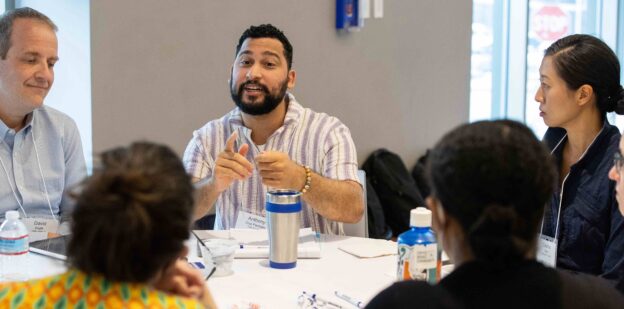In George Eliot’s Romola, we see events from the perspective of four major characters (one at a time): Tito Melema, Baldassarre Calvo, Tessa, and Romola herself. Four people can have up to 3! = 6 bilateral relationships. In Romola, each of these six potential connections is filled out with several independent interactions.
Just for example, Tito encounters Nessa on his first day in Florence and then on several important occasions, Baldassare takes shelter in the farm where Tessa lives, Tessa’s toddler runs into the street and into Romola’s arms, and Tito washes ashore at Baldassare’s very location on the shore of the Arno. In that last case, the older man has no reason to expect his enemy to appear, but when this happens, he understandably feels that “something was being brought to him” for a reason–as a “fortunate chance for him” (italics in the original).
These distinct connections arise over a short period in quite a large community. (The population of Renaissance Florence was on the order of 100,000, but that understates the improbability, since Baldassare has been enslaved in the Middle East and encounters Tito almost as soon as he finds himself in Florence. The odds of that encounter must be one in a million.)
I think we generally assume that we pass through life with one thing just happening after another–sometimes as a result of our decisions, but often by sheer contingency. Occasional coincidences should be expected as a matter of probability, but they do not mean anything. Every one out of a million events will be a one-in-a-million event.
These assumptions make Romola look contrived and perhaps didactic, evidently the work of an artist who has deliberately connected four characters in the maximum number of ways to explore symmetries and contrasts. The text seems unlike life.
As Caroline Levine (yes, my sister) shows, Romola learns as the story unfolds. She figures out that life is not foreordained and prophesies are unreliable–sometimes true, but only by chance. (Prophesies are important in this political novel, since the main political actor, Savonarola, gains his influence through prophesy.) Romola concludes that human beings make free moral choices that alone determine what happens. Her conclusion seems inconsistent with the density of coincidences in the plot, which should instead suggest (as the addled Baldassare concludes) that everything has been set up for a reason.
Caroline notes that plotted narratives typically have a strange feature. The author knows what will happen and selects the events to narrate with that outcome in mind. It’s a flaw in a plotted narrative if we’re told things that don’t matter later.
Imagine two events that occur in a sequence, A and B. In a novel, A should have an affect on B, yet B is the cause of A in the sense that it explains why A is narrated.
This means that Romola may (or may not) be correct about how life works, but she is wrong about her own story as it is told in the eponymous novel. Her story is determined by an omniscient creator and organized to reach coherent conclusions.
For me, the density of coincidences is a bit alienating: it’s like seeing the puppeteer’s hands. As the coincidences mount, I think: this is just too improbable. I prefer Middlemarch, which also has coincidences, but at a much lower rate. Still, perhaps the best conclusion is that any narrated story is a contrivance. In this case, it’s contrived to teach us that only our choices matter, and that is a bit of a paradox.
Source: Caroline Levine, “The Prophetic Fallacy: Realism, Foreshadowing, and Narrative Knowledge in Romola,” in Levine and Mark W. Turner, From Author to Text: Re-Reading George Eliot’s Romola (Ashgate 1998), pp. 135-164. See also Wallace Stevens’ idea of order; my favorite book (on Middlemarch, from 2008); Martin Luther King’s philosophy of time; Hilary Mantel and Walter Benjamin.
